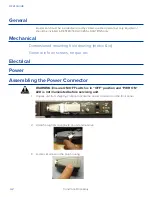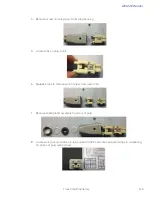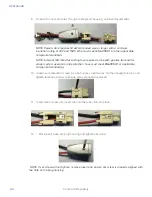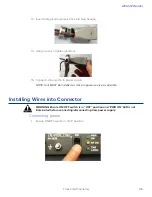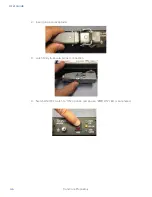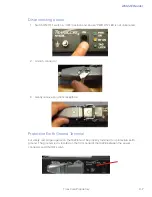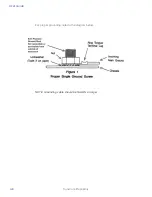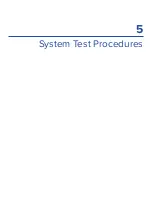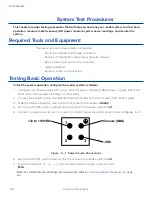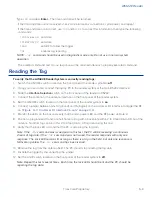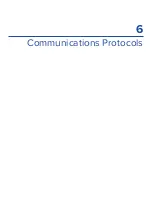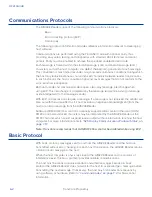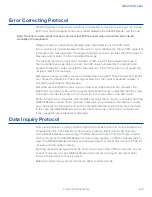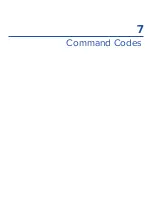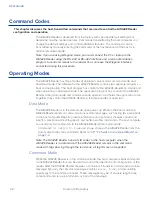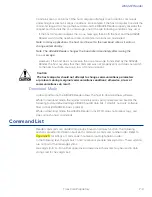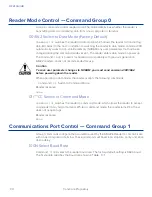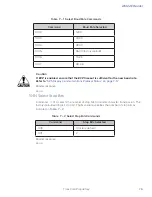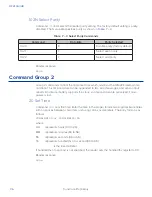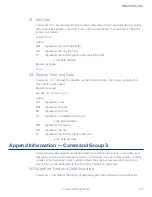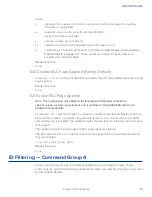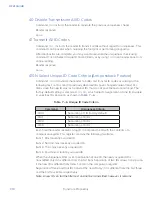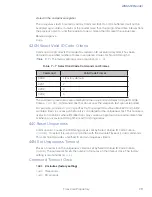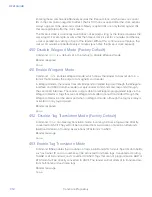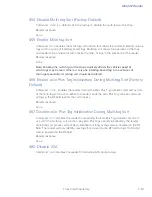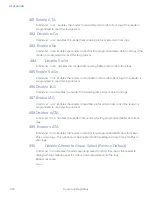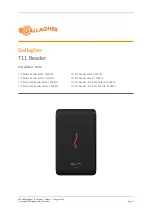
AI1422E Reader
TransCore Proprietary
6-3
Error Correcting Protocol
When the quality of data communications is imperative or may be suspect, you can invoke
ECP to ensure the integrity of data transmitted between the AI1422E Reader and the host.
Note: TransCore recommends that basic protocol (not ECP) be used when commands are entered
manually at the keyboard.
Wiegand output is automatically disabled when the reader is put into ECP mode.
Error correction is accomplished with the use of a cyclic redundancy check (CRC) value that
is based on the message data. The originator (reader or host) calculates the CRC value of a
message and includes it in the transmitted message.
The recipient (reader or host) also calculates a CRC value for the received message. If
the transmitted message data is correct, the CRC value calculated by the recipient will
agree with the CRC value calculated by the originator. If the CRC values do not agree, the
recipient rejects the message.
Message sequence numbers are also included when using ECP. These sequence numbers
are checked to determine if the message received has the correct sequence number; if
not, the recipient rejects the message.
Since the seven-bit ASCII code is used and there are eight data bits per character, the
eighth bit can optionally be used to support parity. Where parity is selected, the CRC value
calculation includes the parity of each character in the calculation of the CRC value.
Parity is required to achieve the most reliable communications. If parity is enabled, both the
AI1422E Reader and the host must issue a message if any received character has a parity
error. However, the message must not be transmitted before receipt of the eom character.
In this case, the AI1422E Reader will issue an Error message, and the host computer will
issue a negative acknowledgment message.
Data Inquiry Protocol
Data inquiry protocol is a basic protocol option that allows the host to control transmission
of reader tag data. The selection of data inquiry protocol affects data mode operation.
As the AI1422E Reader acquires tags, it buffers them but does not transmit them. Instead,
the host must poll the AI1422E Reader for each tag by sending a CTRL-E character (hex 5
digit). The AI1422E Reader transmits one message (tag ID or report data) for each CTRL-E it
receives until the buffer is empty.
Each tag request message sent by the host consists only of the CTRL-E character; no som
or eom characters are sent. AI1422E Reader data transmission (tag ID and report data)
format is the same as for basic protocol.
Selection of data inquiry protocol does not affect command mode
Summary of Contents for 1422E
Page 16: ...Before You Begin 1...
Page 20: ...AI1422E Reader TransCore Proprietary 1 5...
Page 21: ...2 System Overview...
Page 25: ...AI1422E Reader TransCore Proprietary 2 5 Figure 2 2 Antenna to Tag Centerline Tolerance...
Page 26: ......
Page 27: ...3 Interface Connections...
Page 32: ...User Guide TransCore Proprietary 3 6...
Page 33: ...4 Installation Instructions...
Page 41: ...AI1422E Reader TransCore Proprietary 4 9...
Page 42: ...5 System Test Procedures...
Page 45: ......
Page 46: ...6 Communications Protocols...
Page 49: ......
Page 50: ...7 Command Codes...
Page 87: ...User Guide TransCore Proprietary 7 38...
Page 88: ...8 Troubleshooting and Maintenance...
Page 93: ......
Page 94: ...Character Conversion A...
Page 96: ...B Technical Specifications...
Page 99: ......

